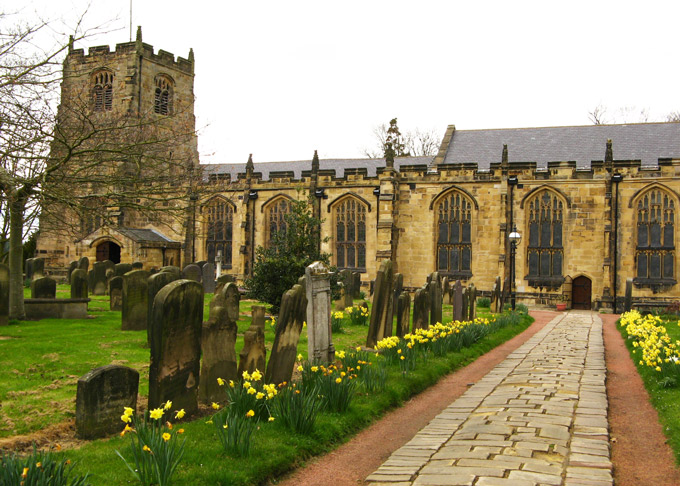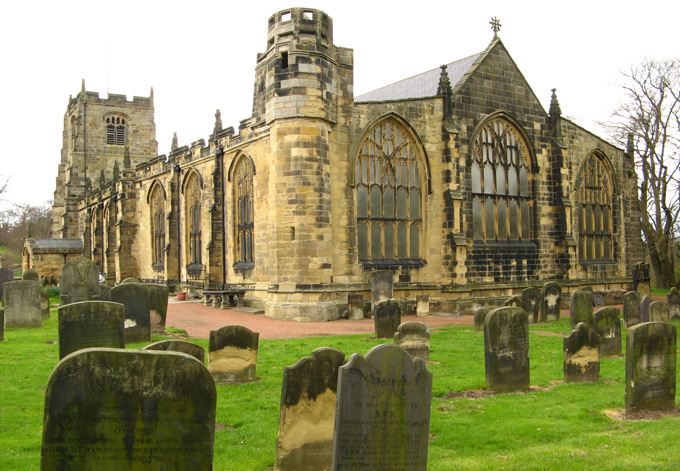Alnwick
-
Another Eddie Brown coach trip took us to Alnwick in the far north of England. Pronounced “An-ick”, the town dates to about 600 AD, and over the centuries has thrived as an agricultural and market center; as the site of Alnwick Castle, home to the powerful Earls of Northumberland; and as a staging post on the Great North Road between Edinburgh and London:
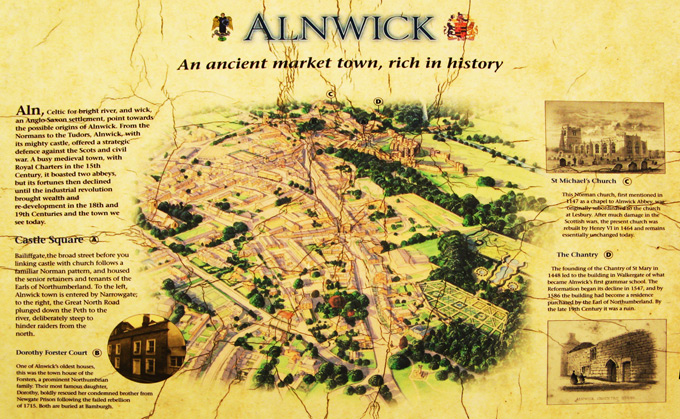
No sooner had we arrived than we were face-to-face with this Tree House in the Gardens, purported to be the largest such structure in the world:
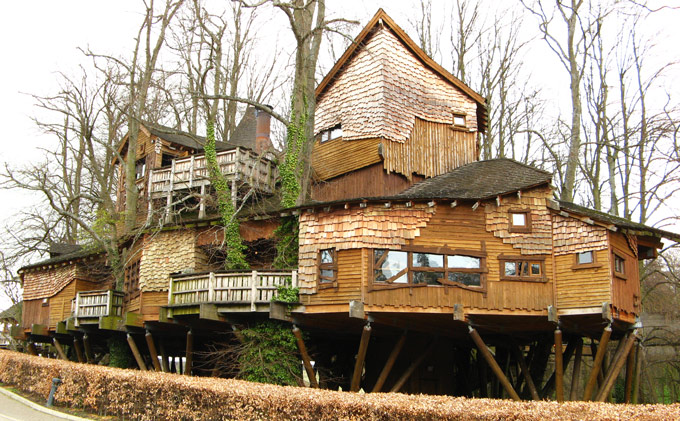
Although largely a restaurant, the Tree House boasts walkways in the sky and wobbly rope bridges perfect for bouncing. Located in Alnwick Garden, it is adjacent to the coach parking area and, so, we viewed it on arrival and departure. Despite weeping skies, we managed to visit the structure before leaving town:
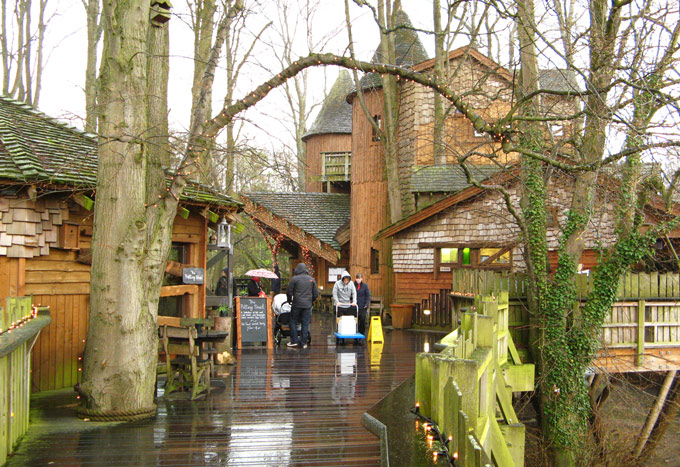
Alnwick is only 32 miles from the Scottish border. Consequently, in medieval days, clashes with raiders from Scotland were frequent, necessitating a fortified castle. Unfortunately, in the name of progress, not many ancient structures remain today. Indeed, only one gate (Bond Gate) in the old town wall exists, a bottle-neck for the two-way vehicular traffic using it:
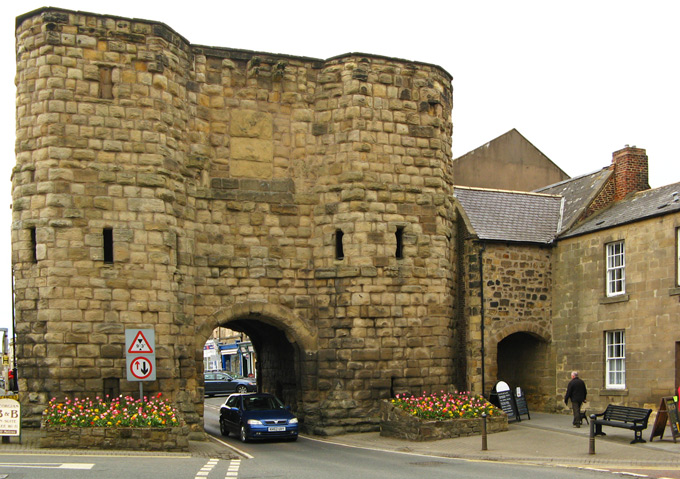
Walking toward the castle, we encountered this bronze statue of local son Sir Harry “Hotspur” Percy, 14 feet tall from foot to sword tip and very detailed. A fierce and famous fighter --- especially against the Scots --- he died in battle as a result of opening his visor to get some air:
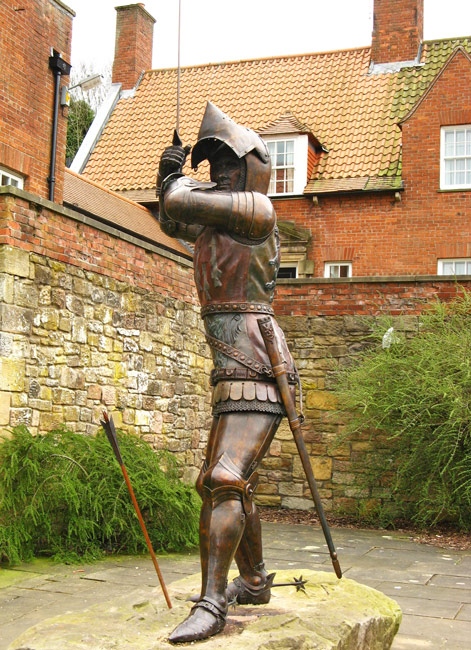
The castle itself is barely visible from town. The outer defensive wall is decorated with statues in such vulnerable positions that their placement seems ridiculous. However, we were informed they have been there a long time:
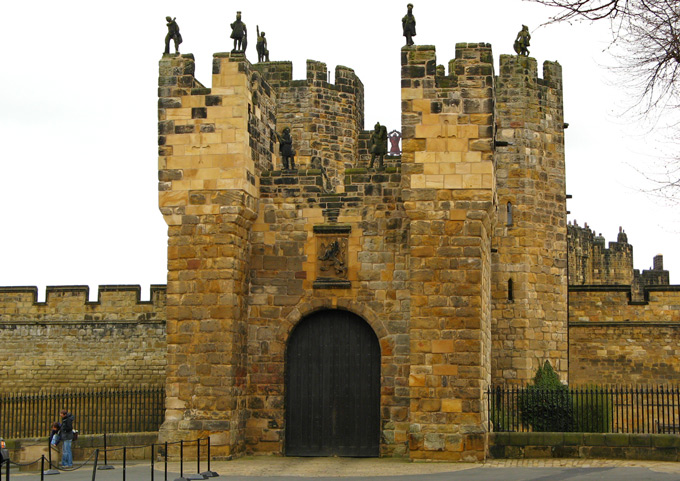
On the opposite side, we had a better view. This northern face of the castle was the side most likely to be attacked by raiders. Much of what is seen here is defensive wall; the castle is in the right half of the photo:
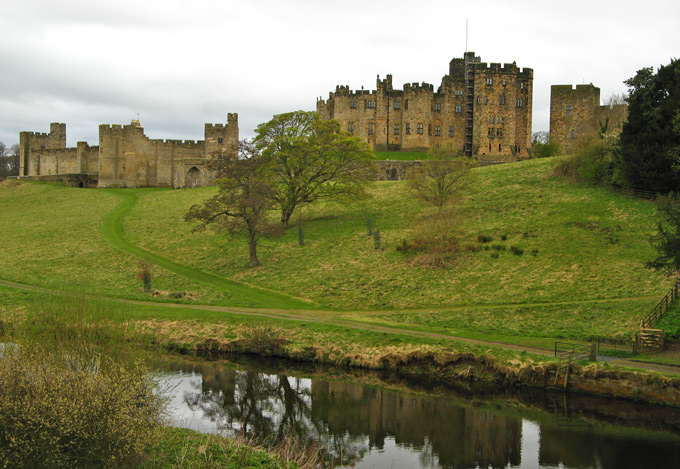
The Aln River, witness to horrific scenes in the past, now flows by peacefully below the castle:
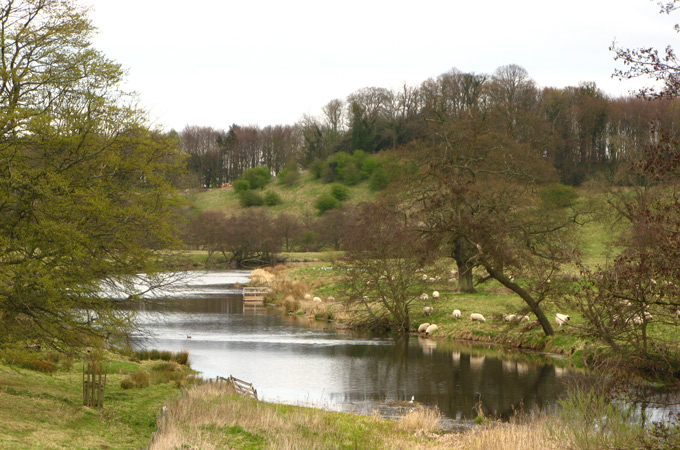
Viewed from the gardens, the castle has a softer, even romantic, appearance. This is the castle known as “Hogwarts” in the Harry Potter films --- or, so we were told:
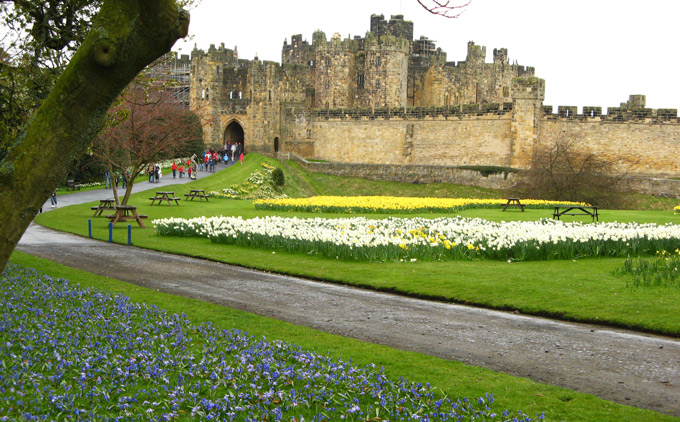
On the north edge of town lies St. Michael’s Church. Handsomely rebuilt in the 14th and 15th centuries, it has been an Anglican church since Reformation times:
